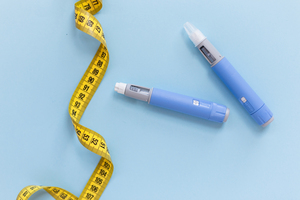Book urgent care & walk-in clinics near me in San Antonio, TX
Own a clinic? Add your location.
Help patients book appointments with you on Solv. It's free!
21 instant-book locations

Little Spurs Pediatric Urgent Care, Las Palmas
Little Spurs Pediatric Urgent Care

NextCare Urgent Care, San Antonio (Terrell Plaza) - a BSWHealth partner
NextCare Urgent Care

Privia Virtual Clinic, Texas
Privia Virtual Clinic

Little Spurs Pediatric Urgent Care, Austin Highway
Little Spurs Pediatric Urgent Care

Little Spurs Pediatric Urgent Care, Wonderland
Little Spurs Pediatric Urgent Care

Little Spurs Pediatric Urgent Care, Westover
Little Spurs Pediatric Urgent Care
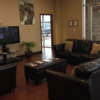
NextCare Urgent Care, San Antonio (Woodlake) - a BSWHealth partner
NextCare Urgent Care
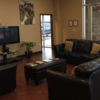
NextCare Urgent Care, San Antonio (Huebner Rd) - a BSWHealth partner
NextCare Urgent Care

Little Spurs Pediatric Urgent Care, Bandera
Little Spurs Pediatric Urgent Care

NextCare Urgent Care, San Antonio (Culebra Rd) - a BSWHealth partner
NextCare Urgent Care

Little Spurs Pediatric Urgent Care, Stone Ridge
Little Spurs Pediatric Urgent Care

NextCare Urgent Care, San Antonio (Stone Oak) - a BSWHealth partner
NextCare Urgent Care

Little Spurs Pediatric Urgent Care, Potranco Road
Little Spurs Pediatric Urgent Care
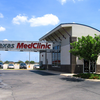
Texas MedClinic Urgent Care, Eisenhauer
Texas MedClinic Urgent Care

Texas MedClinic Urgent Care, Blanco
Texas MedClinic Urgent Care

Texas MedClinic Urgent Care, Stone Oak
Texas MedClinic Urgent Care
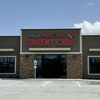
Texas MedClinic Urgent Care, Potranco
Texas MedClinic Urgent Care
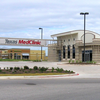
Texas MedClinic Urgent Care, Stotzer
Texas MedClinic Urgent Care
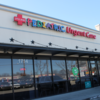
Little Spurs Pediatric Urgent Care, Southwest
Little Spurs Pediatric Urgent Care
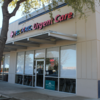
Little Spurs Pediatric Urgent Care, City Base
Little Spurs Pediatric Urgent Care

Texas MedClinic Urgent Care, SW Military
Texas MedClinic Urgent Care
Own a clinic? Add your location.
Help patients book appointments with you on Solv. It's free!
Recent Urgent Care Reviews (20)
Getting to Know the San Antonio Area
San Antonio is a vibrant city that seamlessly blends rich history, cultural diversity, and modern amenities. With its numerous neighborhoods each offering unique attractions and community vibes, residents and visitors alike can easily access quality healthcare through a variety of urgent care facilities. Whether you're exploring the artistic charm of Tobin Hill or enjoying the lush landscapes of Stone Oak, you can find high-quality urgent care locations throughout San Antonio, ensuring that prompt medical attention is always within reach, no matter where you are in the city.
In the charming Alamo Heights, known for its picturesque neighborhoods and cultural gems like the San Antonio Zoo and the McNay Art Museum, residents can find CareNow Urgent Care conveniently located at 1000 Austin Hwy. Nestled between North New Braunfels Avenue and Basse Road, this facility is a perfect stop for those seeking quick medical attention while exploring the area’s vibrant art and outdoor spaces.
Moving to the upscale community of Stone Oak, characterized by its lush parks and golf courses, MedSpring Urgent Care is ideally situated at 22603 US-281 N. This location, bordered by Blanco Road and Loop 1604, offers easy access for families enjoying a day at Stone Oak Park or Canyon Springs Golf Club. Here, residents can receive prompt care without straying far from their recreational activities.
In the exclusive enclave of The Dominion, where luxury living meets natural beauty, The Urgency Room can be found at 23003 I-10. This facility is conveniently located near the Dominion Country Club and Friedrich Wilderness Park, making it an ideal choice for residents who want quality healthcare close to their serene surroundings. With I-10 serving as a major artery, getting care is seamless for those in this affluent neighborhood.
Helotes, a charming town with a rustic feel and attractions like Government Canyon State Natural Area, is home to Urgent Care of Texas at 12210 Bandera Rd. Positioned along Bandera Road and near Old Town Helotes, this urgent care center provides essential services for locals and visitors alike, ensuring that help is readily available after a day of outdoor adventures or wine tasting at Helotes Creek Winery.
Shavano Park, known for its beautiful parks and family-friendly atmosphere, features ExpressMed Urgent Care at 1500 Wurzbach Pkwy. Located between NW Military Highway and Loop 1604, this facility is close to Shavano Park City Hall and Phil Hardberger Park, making it a convenient choice for residents who value quick access to healthcare while enjoying their community’s green spaces.
In the vibrant Tobin Hill neighborhood, where art and culture flourish, NextCare Urgent Care is located at 1000 S St Mary's St. This facility is a stone's throw from the bustling Pearl District and offers a convenient healthcare option for those exploring local shops and dining. With easy access via St. Mary’s Street, residents can quickly find care amidst the lively urban environment.
The Medical Center District, a hub of healthcare and innovation, is home to CareNow Urgent Care at 1001 Babcock Rd. Situated between Fredericksburg Road and Wurzbach Road, this urgent care center is right next to the South Texas Medical Center and University Health System, ensuring that quality medical services are always within reach for those in need of urgent care.
In the family-friendly Alamo Ranch area, known for its shopping and recreational opportunities, WellMed at Alamo Ranch is located at 11715 Culebra Rd. This facility, positioned along Culebra Road and close to Alamo Ranch Marketplace, offers residents a reliable option for urgent care while they enjoy the local amenities and attractions.
Terrell Hills, a quaint neighborhood with a strong sense of community, features Urgent Care at Fort Sam at 3200 Rittiman Rd. Located near Fort Sam Houston, this urgent care center is easily accessible for residents and military personnel alike, ensuring that quality care is available just moments away from home.
Finally, in the picturesque Olmos Park, where tree-lined streets and historic homes create a serene atmosphere, Urgent Care of San Antonio is conveniently located at 2001 McCullough Ave. This facility is close to Olmos Basin Park and the Olmos Park Golf Course, making it an ideal choice for those seeking medical attention after enjoying the outdoors. With easy access via McCullough Avenue, residents can rely on this urgent care center for prompt and compassionate service.
How Much Does Urgent Care Cost In San Antonio?
The cost of urgent care services in San Antonio varies widely based on several factors, including the type of treatment needed, the facility you choose, and whether you have insurance. Generally, urgent care centers are more affordable than emergency room visits, making them a popular choice for non-life-threatening conditions.
Patients with insurance may find that their out-of-pocket costs depend on their specific plan, including co-pays and deductibles. While costs can differ, urgent care remains a cost-effective option for immediate medical needs in San Antonio, providing accessible care without the higher expenses associated with emergency services.
What is the cost of an urgent care visit in San Antonio without insurance?
For those without insurance, many urgent care centers offer transparent pricing and payment options, allowing patients to understand their expenses upfront. Additionally, some facilities may provide discounts or payment plans to accommodate different financial situations.
What Conditions are Treated in San Antonio?
Urgent care facilities in San Antonio are equipped to handle a wide range of medical conditions and services, making them a convenient option for patients seeking immediate care. Here’s a list of common conditions treated at urgent care centers in the area:
-
Cuts and lacerations, including wound care, including stitches and bandaging.
-
Infections, like urinary tract infections (UTIs), skin infections, and respiratory infections.
-
Cold and flu symptoms, such as a cough, sore throat, fever, and body aches.
-
Allergies, including seasonal allergies, allergic reactions, and asthma exacerbations.
-
Gastrointestinal issues, like nausea, vomiting, diarrhea, and abdominal pain.
-
Skin conditions, including rashes, STDs, insect bites, and minor burns.
-
Sports injuries, such as concussions, tendonitis, and other sports-related injuries.
-
Occupational injuries, which includes work-related injuries and illnesses.
-
Diagnostic services like X-rays for fractures and other injuries, lab tests for infections or illnesses.
-
Immunizations for the flu, tetanus, and other preventable diseases.
-
Physicals for school, sports, and employment physicals.
-
On-site laboratory testing, including rapid tests for strep throat, flu, and COVID-19.
Some urgent care facilities also offer telemedicine services, including virtual consultations for non-emergency conditions. This accessibility ensures that patients receive timely care without the need for a lengthy wait at an emergency room.
San Antonio Urgent Care FAQs
Where can I find the best urgent care center in San Antonio?
To find the best urgent care center in San Antonio, consider looking at online reviews, ratings, and patient testimonials. Websites like SolvHealth can provide insights into the quality of care and services offered. Additionally, asking for recommendations from friends or family members can help you identify reputable facilities that prioritize patient satisfaction.
What are the typical wait times at San Antonio urgent care centers?
Typical wait times at urgent care centers in San Antonio can vary based on the time of day, the facility's location, and the number of patients being treated. Generally, wait times range from 15 minutes to an hour, with busier times such as evenings and weekends potentially leading to longer waits. Many centers offer online check-in options to help reduce wait times.
Which urgent care centers in San Antonio are open 24/7?
There are a few urgent care centers in San Antonio operating 24/7 to provide round-the-clock access to medical care. Texas MedClinic Urgent Care offers three convenient locations to receive 24/7 urgent care:
-
Wurzbach location: 9885 IH-10 West
-
Loop 1604 location: 8341 Agora Parkway
-
Culebra location: 6530 W Loop 1604 N
Do urgent care centers in San Antonio accept walk-ins, or do I need an appointment?
Most urgent care centers in San Antonio accept walk-ins, allowing patients to receive care without an appointment. However, some facilities also offer online check-in or appointment scheduling to help streamline the process and minimize wait times. You can use SolvHealth to save your spot in line at many San Antonio urgent care locations.
Can I get a COVID-19 test at an urgent care center in San Antonio?
Yes, many urgent care centers in San Antonio offer COVID-19 testing, including rapid tests and PCR tests. These centers typically provide testing for symptomatic patients as well as for those requiring testing for travel or other purposes. It's best to call ahead or check the center's website to confirm availability and any specific requirements.
What other services do San Antonio urgent care centers provide beyond basic medical care?
In addition to treating minor injuries and illnesses, San Antonio urgent care centers provide a variety of services such as vaccinations, physicals, lab testing, and diagnostic imaging like X-rays. Many centers also offer telemedicine consultations, making it easier for patients to access care for non-emergency conditions from the comfort of their homes.
Are there pediatric urgent care centers in San Antonio?
Yes, there are pediatric urgent care centers in San Antonio that specialize in treating children’s medical needs. These facilities are designed to provide a child-friendly environment and staff trained in pediatric care. Parents can find dedicated pediatric urgent care options or family-friendly urgent care centers that cater to patients of all ages. Little Spurs Pediatric Urgent Care offers several locations — Tots ‘N Teens Pediatric Urgent Care and Kidz Now Urgent Care are also available.
How do I choose between an emergency room and urgent care in San Antonio?
Choosing between an emergency room and urgent care in San Antonio depends on the severity of the medical issue. If the condition is life-threatening or requires immediate, advanced medical intervention, the emergency room is the appropriate choice. For non-life-threatening issues that require prompt attention, such as minor injuries or illnesses, urgent care is typically the better option due to shorter wait times and lower costs.
What are the most highly rated urgent care centers in San Antonio?
Some of the most highly rated urgent care centers in San Antonio include CareNow Urgent Care, NextCare Urgent Care, and MedSpring Urgent Care. These facilities are praised for their quality of care, friendly staff, and efficient service. Checking online reviews and ratings on SolvHealth can provide additional insights into patient experiences at specific centers.
Top 7 Local FAQs About San Antonio Healthcare
Why do urgent care centers close at 8 pm?
Urgent care centers often close at 8 pm to balance the demand for services with operational costs. Many centers cater to non-emergency medical needs, and the majority of patients seek care during the day and early evening. Closing earlier allows staff to manage resources effectively while still providing accessible care during peak hours. However, there are some urgent care facilities in San Antonio that are open 24/7.
Can an urgent care provider in San Antonio treat more serious conditions?
Urgent care providers in San Antonio can treat a variety of non-life-threatening conditions but are not equipped for serious emergencies. While they can handle issues like minor fractures, infections, and sprains, patients with more severe or life-threatening conditions should seek care at an emergency room for comprehensive evaluation and treatment.
What do urgent care centers treat?
Urgent care centers treat a wide range of medical issues, including minor injuries, infections, allergies, and common illnesses. They can provide services such as wound care, diagnostic imaging like X-rays, vaccinations, and lab tests, making them a convenient option for non-emergency medical needs.
Low-cost healthcare with no insurance?
Many urgent care centers offer low-cost healthcare options for patients without insurance, providing transparent pricing and payment plans. Some facilities may also offer discounts for cash payments or have programs in place to assist low-income patients, ensuring access to necessary medical care without financial strain.
What is healthcare for low-income people in TX?
In Texas, low-income individuals can access healthcare through programs like Medicaid, which provides coverage for eligible residents. Additionally, community health centers and clinics offer affordable services and sliding scale fees based on income, ensuring that low-income individuals receive necessary medical care regardless of their financial situation.
Which San Antonio urgent care centers offer COVID-19 testing?
Several urgent care centers in San Antonio offer COVID-19 testing, including CareNow Urgent Care and NextCare Urgent Care. These facilities provide both rapid and PCR tests for symptomatic patients and those needing testing for travel or other purposes. It’s advisable to check with individual centers for availability and testing protocols.
Do Portland or San Antonio have better hospitals?
Determining whether Portland or San Antonio has better hospitals can depend on various factors, including specific medical needs, types of services offered, and patient experiences. Both cities have reputable healthcare facilities with specialized services, so evaluating individual hospitals based on quality of care, patient satisfaction, and available specialties is essential for making an informed decision.
Common Health Insurance Companies in TX
Here’s a list of common health insurance companies operating in Texas, providing a range of coverage options for residents:
-
United Healthcare: A leading provider offering a variety of health plans, including individual, family, and employer-sponsored options.
-
Emblem Health: Known for its comprehensive coverage and focus on community health, Emblem Health offers plans tailored to the needs of Texas residents.
-
Anthem Blue Cross Blue Shield: A well-established provider that offers a wide range of health insurance products, including individual and group plans.
-
Aetna: Aetna provides various health insurance options, including medical, dental, and vision plans, catering to individuals, families, and businesses.
-
Oscar Health: Oscar Health is known for its user-friendly approach and innovative technology, offering affordable plans with a focus on preventive care.
-
Cigna: Cigna offers a broad range of health insurance plans, including individual and family coverage, as well as employer-sponsored health benefits.
-
Fidelis Care: This provider focuses on affordable health insurance options for low-income individuals and families, with a commitment to accessible care.
-
MetroPlus Health Plan: MetroPlus offers affordable health coverage options, particularly for low-income residents, with a focus on community health services.
-
Health First: Health First provides a variety of health plans, emphasizing preventive care and wellness programs for its members.
-
Empire BlueCross BlueShield: A prominent provider offering a wide range of health insurance products, including individual and group plans, with a focus on quality care and customer service.
These companies represent some of the top health insurance providers in Texas, each offering various plans to meet the diverse needs of residents.
San Antonio Healthcare News in 2024
-
HCA to acquire 41 urgent care clinics in Texas
Healthcare Dive (May 19, 2023) -
Alamo City Urgent Care to Open Clinic Near Hill Country Village
Community Impact, San Antonio (July 3, 2024)
-
Texas MedClinic Wins Best Urgent Care Center 2024
San Antonio Current (Oct 21, 2024)
Solv has strict sourcing guidelines and relies on peer-reviewed studies, academic research institutions, and medical associations. We avoid using tertiary references.
Related Searches
Urinalysis in San Antonio, TX
DNA Test in San Antonio, TX
Cholesterol Test in San Antonio, TX
RSV Test in San Antonio, TX
STD Testing in San Antonio, TX
Flu Test in San Antonio, TX
Diabetes Test in San Antonio, TX
Pregnancy Test in San Antonio, TX
TB Test in San Antonio, TX
Pediatric Urgent Care in San Antonio, TX
Basic Metabolic Panel in San Antonio, TX
COVID-19 Pill in San Antonio, TX
Blood Test in San Antonio, TX
Glucose Test in San Antonio, TX
Sports Physicals in San Antonio, TX
Ear Wax Removal in San Antonio, TX
COVID-19 Testing in San Antonio, TX
CMP Test in San Antonio, TX
Hepatitis test in San Antonio, TX
Diagnostic Test in San Antonio, TX
A1C Test in San Antonio, TX
Drug Test in San Antonio, TX
DOT Exam in San Antonio, TX
Strep Test in San Antonio, TX
Mono Test in San Antonio, TX
Dermatologists in San Antonio, TX
Retail Clinic in San Antonio, TX
Pulmonary Function Test in San Antonio, TX
Vitamin D Test in San Antonio, TX
Allergy Testing in San Antonio, TX
H Pylori Test in San Antonio, TX
Lab Tests in San Antonio, TX
Thyroid Test in San Antonio, TX
Aetna Urgent Care
Blue Cross Blue Shield Urgent Care
Cigna Urgent Care
COVID-19
Flu
United Health Urgent Care
» All services in San Antonio, TXFind urgent care
Nearby cities
Everyday Healthcare, Simplified
Expert advice to help you live your best life




